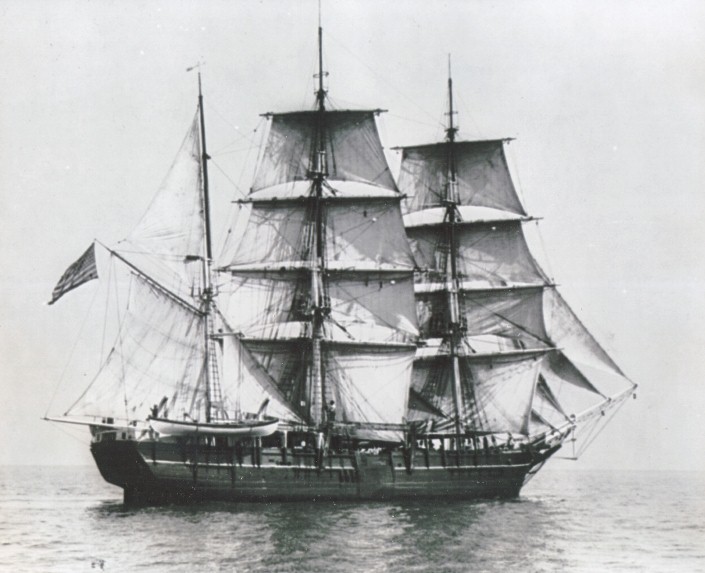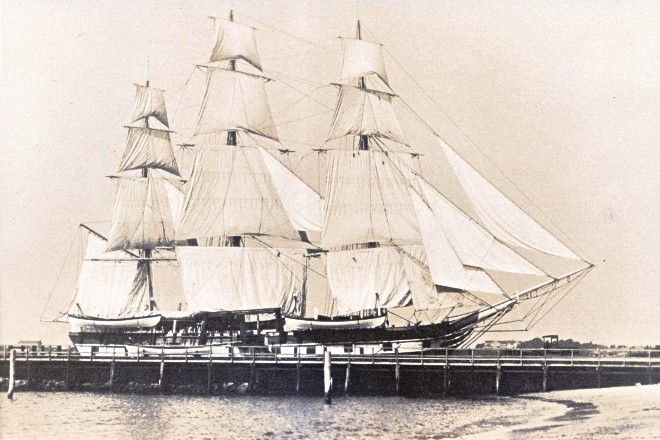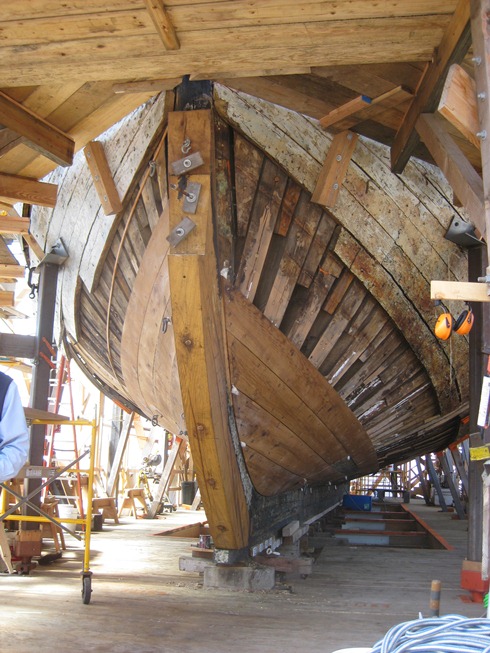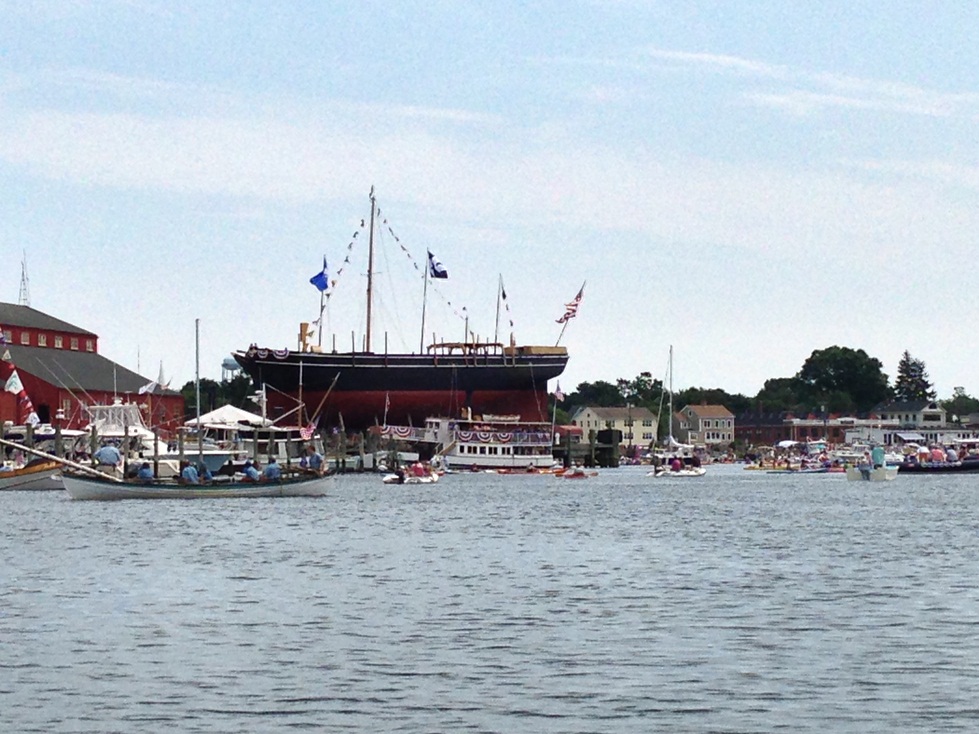Of Whaling Ships
We’re still trying to track down a details of Robert Brown’s first whaling voyage. Family stories tell us he shipped as a cooper or blacksmith, having learned something of workmanship in his family’s mill. Records are difficult to sort, as there were at least two or three others named “Robert Brown” active in the Yankee whaling trade about the same time as our man. We have confirmed him on three different ships (four voyages) sailing from New London between 1839 and 1850: Mentor (1839-41), Montezuma (1841-44, 1844-47), Electra (1847-50), and North Star (1850-55). With his family settled in Hawaii, he bought controlling interest in Black Warrior, a 231-ton bark originally built in Duxbury, Massachusetts, generally sailed out of New London, and offered for sale in Honolulu in 1854. Alas, Brown’s tenure as a ship owner wouldn’t last. In 1858, she sank on the coast of Baja California attempting to leave the wrong inlet in search of Charles Melville Scammon’s gray whales. To this day, the lagoon and nearby town bear the name Guerrero Negro, the Spanish translation of Brown’s last whaler, Black Warrior. The crew survived and made their way back to San Diego, but loss of the ship and most of her oil (all uninsured) effectively marked the end of Brown’s whaling career.
|
 |

|

All of the ships our Captain Brown sailed have passed into history, but one kindred vessel remains. Nelson Haley, who married the captain’s third daughter, Charlotte, spent part of his early career as a boat steerer (or harpooner) on the Charles W. Morgan, which made 37 whaling voyages between 1841 and 1921, primarily out of New Bedford, Massachusetts. The last of her kind, the Morgan has been the jewel in th e crown of the historic collection at Mystic Seaport since 1941. She spent many years beached on a sandbank beside Chubb’s Wharf, her hull too fragile to trust to the elements, but open to share her stories with seaport visitors. In the mid 1970’s, she was pulled from the mud and had her hull patched sufficiently to set her a float again. It was a heady thing to feel her decks roll, even just a little bit, after so many years aground. e crown of the historic collection at Mystic Seaport since 1941. She spent many years beached on a sandbank beside Chubb’s Wharf, her hull too fragile to trust to the elements, but open to share her stories with seaport visitors. In the mid 1970’s, she was pulled from the mud and had her hull patched sufficiently to set her a float again. It was a heady thing to feel her decks roll, even just a little bit, after so many years aground.
In November of 2008, the Seaport’s Dupont Shipyard began a five-year, multi-million dollar restoration of the Morgan, which ultimately make her seaworthy for the first time in more than 70 years. Details of the restoration project are on the seaport's web site. |
The Morgan restoration has been a long and meticulous process, and we’ve found it necessary to check on the progress in person a time or two. |
 
|
In April, 2012, the Morgan was cocooned in her own tent with her hull in pieces. Beside her in the shipyard, the Freedom Schooner Amistad had come home for repairs. It was more than a little mind-boggling to stand between these two vessels and ponder the sheer volume of history they represent.
|

Launching an Icon: Charles W. Morgan
On July 21, 2013, the hull restoration was complete, and the ship was ready to return to the water. Thousands of people came by land and sea to see the her return to the water. Given the proximity of the Sabino and the floatilla of smaller boats on the river, it was pretty obvious that we weren’t in for a great splash, else somebody would be swamped... and then there’s that whole thing about having a high-tech lift that removes the need for unnecessary risk to life, limb, hull, etc. It may reduce the drama, but it’s probably easier on the planking, too.
|

Of course, finding a spot to watch the launch amid the throng was a bit of a challenge. Folks who could afford premium seating (or came in their own boat) may have had a better view, but there was plenty of time to look as she was lowered slowly (v-e-r-y s-l-o-w-l-y) into the water. |

If one’s view had to be obstructed, however, there are worse things to look at than Breck Marshall circling the estuary.
|

Seaport crew entertained part of the crowd with a whale boat demonstration
(... and a taut crew they were, too!)
|

Eventually, the ship was afloat, the speeches finished, band struck it’s last chord, and the fire boats sprayed patriotic plumes. (If you look carefully at the photo to the left, you can just make out the Morgan’s bow rails covered in red-white-and-blue bunting.) |

It’s not really a road trip if you can’t sneak a selfie in somewhere, right?
|
If
you have material to add to this section,
please contact the site administrator:
admin@captainbrown.net
|
Descendants of